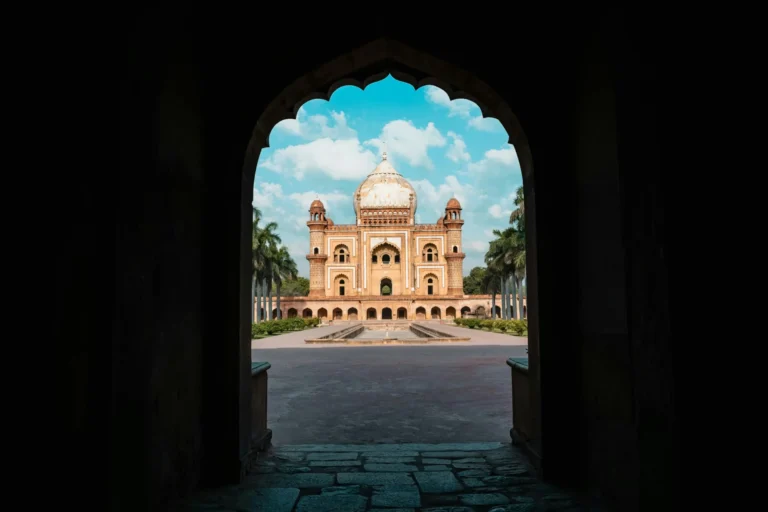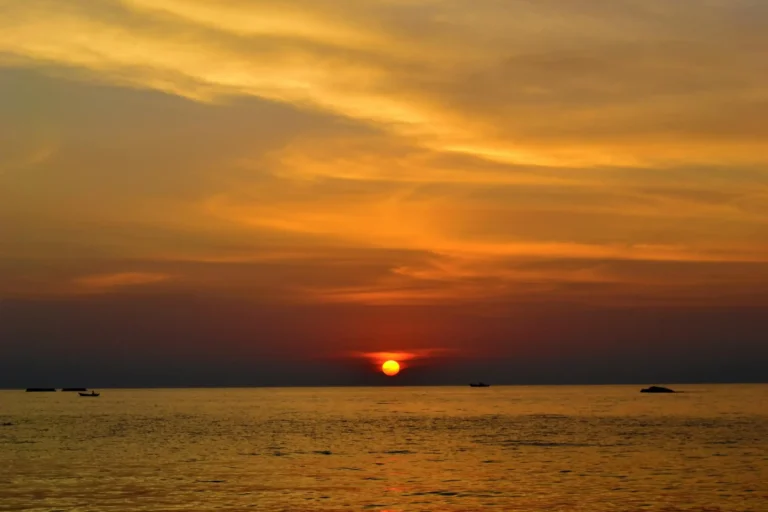India is a multicultural, diverse country. It’s beautiful and this diversity is held together with our language, terrains and our religion. As you move along the Indian terrains, our skin colour changes, so does our language, good and our lifestyle. But there is one thing that holds all Indians together, that is our culture and our temples.
Temples are not just beautiful architectural marvels, but they hold so much value, cultural significance and our history. They are majestic, filled with the aura of clean energy and devotion.

Table of Contents
ToggleFamous Temple Festivals in India
I think all of you at this point have heard about The Jagannath Rath Yatra in Odisha? And it’s grandness. Beautiful and marvellous chariots pulling up on the streets. The streets filled with music and people, all in awe of the festival. Then there’s Thrissur Pooram in Kerala. Beautiful, magnificent elephants with gold, surrounded by fireworks and it’s definitely a sight to watch for.
In Tamil Nadu we have Meenakshi Thirukalyanam in Madurai. It is like watching an out of the world wedding with thousands of guests. They even show us the love story of Meenakshi and Lord Sundareswarar. The story is all about belief.
These festivals aren’t just about watching from the sidelines. You’re expected to join in singing, fast, pray, or just feel the moment. Some come for spiritual reasons. Others for the art, the music, the vibe. And somehow, everyone leaves with something.

Celebration in Hindu Temples
Now most people, especially in smaller towns and villages. During huge events, temple courtyards become full of activity. Now we have priests chant under the pure mango leaf garlands which is auspicious for our religion.
And during the festival itself? It’s fireworks of auspicious energy everywhere. Abhishekams, where idols are bathed with milk, honey, ghee, sometimes even fruit juices. There are huge processions where the deity is carried like royalty.

Kumbh Mela History, Kumbh Mela Dates, and the Power of the Holy Bath.
Let’s talk about Kumbh Mela. It’s mind-blowing, millions of people gathering at riverbanks to take an auspicious dip in the sacred waters on specific days can wash away lifetimes of karma. Sounds intense? It is.
The history of the Kumbh Mela goes back thousands of years, rooted in the story of the gods and demons churning the ocean to find the nectar of immortality. During the battle, a few drops of that nectar fell on four places Prayagraj, Haridwar, Ujjain, and Nashik. These are the sites of the Kumbh, and the festival rotates between them.
Now, if you plan to go, timing is everything. The Kumbh Mela happens every 12 years at each site, with smaller versions like the Ardh Kumbh and Maha Kumbh in between. The next big one at Prayagraj is set for 2025, and it’ll be huge. But don’t just go for the bath. The early morning chants, the flickering diyas on the water, the saffron-robed sadhus it’s like watching another world unfold in real-time.
And while some people go as pilgrims, others go as observers. Both end up changed.

Durga Puja Rituals, Navratri Temple Celebrations, and Where to Be
Come October, something shifts in the air. There’s more energy, more music, more colour. That’s Navratri and Durga Puja season. Two festivals, same goddess Devi but celebrated in distinct ways depending on where you are.
In West Bengal, it’s all about Durga Puja. Huge pandals (temporary temples) pop up overnight. The statues of the goddess are works of art fierce, protective, graceful. Over nine days, people go from pandal to pandal, dressed in their best, soaking in the rituals and the rhythm. You’ll see drums beating, priests chanting, and families offering flowers and food to the goddess. And when it ends on Dashami the idol is carried to the river and immersed, marking a bittersweet goodbye.

Meanwhile, in places like Gujarat, Navratri feels like a nine-night party with a spiritual core. There’s fasting, temple hopping, and then, of course, garba and dandiya raas, traditional dances that bring entire communities together every night. If you ever wanted to dance until your feet hurt and your heart was full, this is the time.
Temples during Navratri become hubs of energy. Special aartis are held, and in South India, people set up Golu displays steps decorated with dolls, often passed down through generations. It’s beautiful to see how one goddess can inspire so many diverse traditions.
- Best places to be for Navratri/Durga Puja?
- Kolkata for sheer scale and artistry.
- Vadodara or Ahmedabad for non-stop dance.
- Chennai for quiet, temple-based devotion and Golu displays.
Diwali Puja Vidhi, Best Temples to Visit on Diwali, and the Festival of Lights
Diwali is certainly one of the biggest, brightest, and most important festivals of India. While Diwali is popularly known as the Festival of Lights, the most significant spiritual meaning behind it is the awareness of the inner light or the Atman. The celebration of Diwali as the victory of good over evil refers to the light of higher knowledge dispelling all ignorance. While the story behind Diwali and the manner of celebration of the festival differ greatly depending on the region, the essence of the festival remains the same, the celebration of life, its enjoyment, and goodness. The word Diwali is derived from the Sanskrit term Deepavali, which translates to “rows of lamps.” Based on the Hindu lunar calendar, Diwali falls between October and November on an Amavasya or moonless night.

Celebrated as the victory of good over evil, the festival is associated with the legend of the Hindu god Lord Ram’s return to his kingdom Ayodhya after 14 years in exile. The demon king Ravan of Lanka had abducted Lord Rama’s consort Sita, only to invite his own death as a result. Lord Ram, along with his brother Lakshman and an army of monkeys, defeated and killed Ravan and returned to his kingdom with Sita. According to mythology, the people of Ayodhya lit up clay lamps known as diyas to welcome him on his return from exile.
The third day of the festival, also known as Lakshmi Puja, is the main Diwali celebration. The day is devoted to Goddess Lakshmi, Goddess of Wealth, and Lord Ganesh, the Lord of auspicious beginnings and the remover of obstacles. The devotees worship them seeking prosperity and wealth. Vijay and his family are no exception. They do not want to annoy the deities and seek their favor. They get up early in the morning and start preparing for the big day. The daughters, Vera and Vali, along with their mother Rajbala, start by creating a colorful Rangoli in the doorway. Artistically sprinkling colored powder on the floor into an amazing pattern needs concentration and precision. The girls and their mother are experts at this. Vishal sits with his mother and curiously watches the Rangoli motif being made.
Diwali is known as the Festival of Lights, but with so many rituals and traditions, it can also be called a festival of sweets, gifts, fireworks, and family. The most important message of Diwali is that of spreading happiness and sharing familial togetherness. Such festive celebrations impart a lot of values to the younger generations by helping them understand and enjoy traditions in a meaningful way.
The Festival of Diwali comes and goes every year, but the enthusiasm to celebrate it increases with every passing year. After all, it is synonymous with good time spent with family and loved ones and promises something memorable for every member of the family and community. Diwali night is a sight to behold in any part of the country, and the oneness of joyful spirits is apparent as people watch their troubles symbolically go up in flames and burst in an exhilarating display of fireworks.

Best Temples for Festivals, Hindu Festival Travel Guide, and Spiritual Tourism in India
India has temples tucked into every kind of corner, some standing grand with towering gopurams, others barely noticeable on a quiet street. But when a festival rolls in, these spaces shift. Everything feels more alive. You hear conch shells in the distance, smell sandalwood and flowers, and before you know it, even the dust in the air seems to glow a little.
There’s this time I ended up in Madurai during Pongal. I hadn’t planned it, it just happened. The whole city felt like it was buzzing, but not in a noisy way. There were rice rangolis outside doorways, women humming songs, and the Meenakshi Temple lit up like it was telling its own story. A little boy offered me a piece of sugarcane with a grin on his face. I didn’t know him, but it didn’t matter. That’s the thing about festivals here, everyone’s family for a while.
Another trip, this one to Dwarka during Janmashtami, came with surprises. I was there with a friend who’d never been to a temple before. We both ended up sitting on the cool stone floor for hours, just watching people sing and clap without worrying if anyone noticed. That Krishna temple wasn’t just about rituals. It felt like joy was spilling out of every corner.
And then there’s Puri. You hear about the Rath Yatra, but you don’t really get it till you see it. Enormous wooden chariots, the kind that look like they belong to some myth you read as a kid, rolling down streets filled with barefoot devotees. One man next to me cried quietly, hand on his chest. I didn’t ask why. I just stood there, feeling something heavy and beautiful at the same time.
To be honest, the best temple experiences I’ve had weren’t planned. They weren’t from bucket lists or travel blogs. Sometimes, it was a random detour on the way to somewhere else. Sometimes, it was hearing a temple bell in the distance and just following the sound.
If you’re looking to experience festivals through temples, don’t go only for the big names. Some of the most peaceful moments happen in small towns and forgotten shrines. Like that night in Khajuraho during Shivratri a group of local women sat near a fire, singing with cracked voices and warm smiles. No microphones. No cameras. Just moonlight and music.

Kumbh Mela History, Kumbh Mela Dates, Hindu Holy Bath
So, you must understand what Kumbh is. The word Kumbh literally means a pot or a pitcher. The story is about somebody who was churning the ocean to get the elixir of life. Initially, on the surface, poison came out. That Shiva drank, and that’s why he turned blue. If it had gone into his body, it would have affected him. So, his wife went and held his throat, stopped it here, and he turned blue in the neck because it was stopped here. It’s a very powerful symbolic story about how poisons are coming at you every day in so many ways. Not necessarily what you consume; in terms of ideas, in terms of thoughts, in terms of emotion, your life can get poisoned, doesn’t it?
Then the elixir came, and everybody is trying to grab it because it’s to make them immortal, or super, or fully lit up, or whatever it promised. Then in this mayhem of trying to grab it, it spilled, and it spilled in four different spots. There are some geo and cosmological reasons why we identify these four different spots. Generally, these are all called Prags or Sangams. In the South, we call it Sangamam. In the North, they’re calling it Prayag, which means water bodies are meeting with a certain force.
When water bodies meet with a certain force at a certain latitudinal position during certain times of the year, it creates a massive possibility of life. This “Prayag” means there is a churn of water, because 72% of your body itself is water. If you are in certain spaces where water is in a certain dynamic, it impacts the body in a huge way. And at a certain time of the year, which is calculated for various reasons and it is especially once in 12 years in the solar cycle, that is, once in every solar cycle, a moment comes when it has the maximum impact. This is the Mahakumbh.
You are supposed to be there for 40 days and do sadhana. That is why all these Akharas and everybody is coming. But today, a whole lot of people, if not most, are tourists who are going there.
Durga Puja Rituals, Navratri Temple Celebrations, Best Places for Navratri in India

If Diwali is light, Durga Puja is fire.
The first time I walked into a pandal in Kolkata, I was overwhelmed. Not by the size of it or the decor, but by the energy. Women in red and white sarees danced with lit dhunuchi in their hands. Drums beat like a racing heart. People weren’t watching, they were inside the moment.
Puja isn’t just about praying to a goddess. It’s about celebrating strength, especially feminine strength. Every detail from the idol’s sharp eyes to the lion at her feet says: I am here. I won’t be quiet. For me, Durga Puja felt like a festival that roared.
In other parts of India, Navratri takes different shapes. In Gujarat, it’s all about garba and dandiya. Whole cities light up at night. Kids, students, aunties, and even quiet old uncles twirl in circles, losing themselves in music that doesn’t stop till your feet give out.
Temples like Ambaji in Gujarat and Vaishno Devi in the north become pilgrimage hot spots during these nine days. Offerings of coconut, halwa, and devotion pile up. I once spent Navratri at a small temple in Himachal, where villagers gathered every evening to sing hymns around a bonfire. There were no DJs, no lights but it had something modern festivals lack: quiet joy.
Across states, the celebration may look different but the feeling is the same. It’s nine nights of remembering who you are and what you’re capable of. Of showing up as your full self, draped in colour, covered in sweat, eyes shining.
Temple festivals in India aren’t just calendar events. They’re moments where the lines between the human and the divine blur. Where food tastes better, music feels louder, and your heart beats a little faster. Whether you’re in a crowd of a million or sitting beside a quiet lamp in a corner shrine, something ancient stirs inside you.
So don’t just read about them. Go. Wander. Let the roads lead you. Let the chants and the chaos find you. And in some dusty temple courtyard or riverside gathering, you just might discover something sacred not just in stone or ritual, but in yourself.


